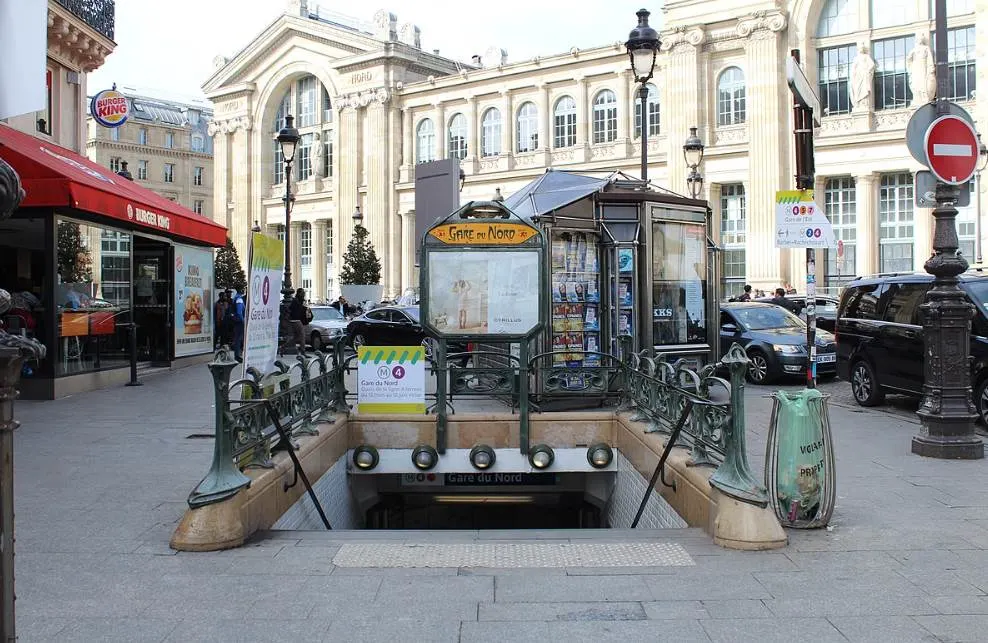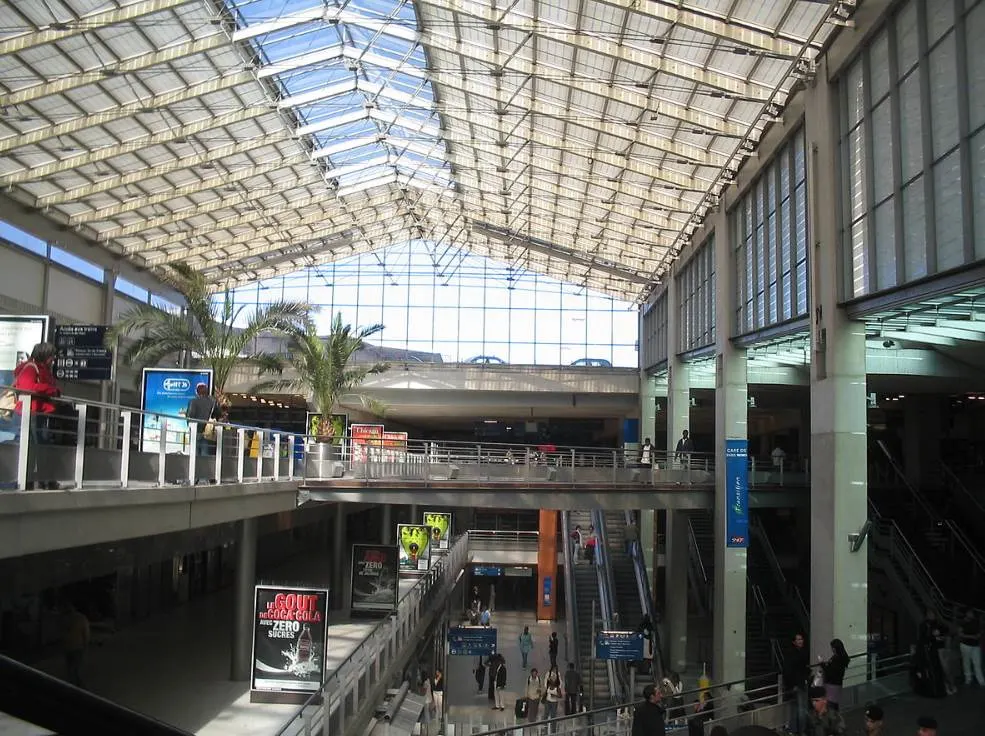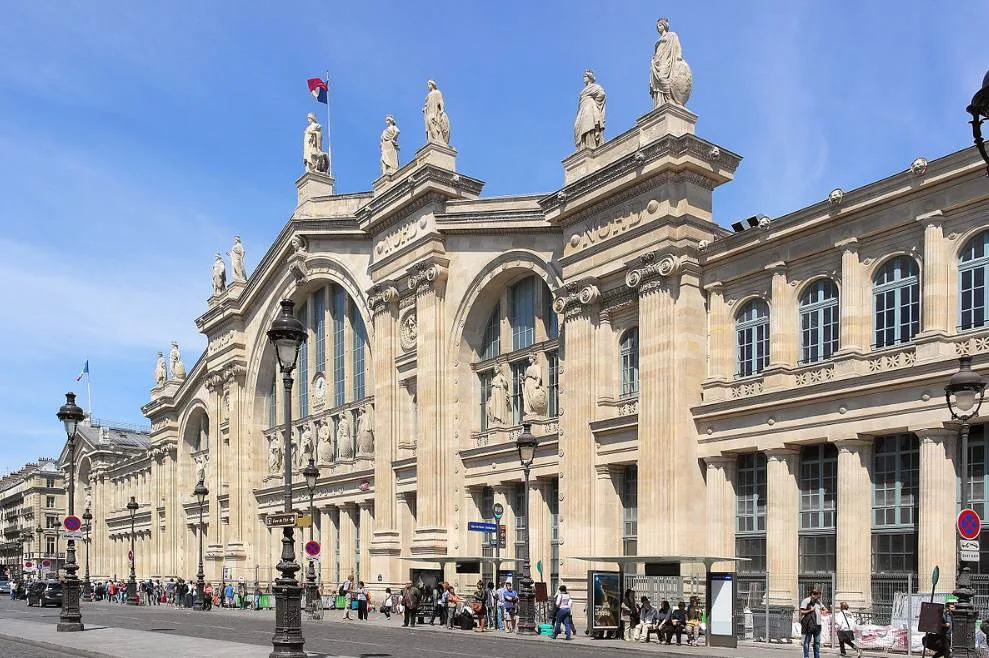If you have ever traveled to Paris by train, chances are that you have arrived at one of the most amazing trains stations in the world.
This is especially true if you arrived from northern France or a neighboring country. That’s because it’s a terminus station for international destinations arriving in the city of Paris.
In this article, you’ll discover some of the most interesting facts about the Gare du Nord, an amazing building in France’s capital that has some interesting stories to tell.
1. It’s located just north of the historical heart of Paris
The Gare du Nord is officially known as Paris-Nord and translates to “Northern Station.” It’s one of the 6 main train stations in Paris and is located in the 10th arrondissement of the city.
This is fairly close to Montmartre Hill where the majestic Sacré-Coeur overlooks the urban jungle that Paris is today.
Another major train station, the Gare de l’Est, is located just walking distance to the southeast of the Gare du Nord, both in the northern part of the city.

2. The first train station in this location was completed in 1846
The first train to travel on a railway line departed from Brussels to the nearby city of Mechelen, Belgium, in 1835. This marked the start of an infrastructure boom that connected all major cities in mainland Europe to each other in the 19th century.
The Paris-Mille railway was completed in 184, the same year that the first version of the Gare du Nord opened its doors.
The first train station had 6 tracks and two large platforms that were covered by a large shed. This structure was supported by cast-iron pillars and wooden trusses.

The most remarkable feature of this building was the fact that the cast-iron pillars were used as drain pipes so the water could directly flow into the city’s sewers.

3. It was deemed way too small less than 2 decades after it was completed
The Chemins de Fer du Nord company that initiated the project had agreed to construct the smallest of two proposed versions. This was a huge blunder because the booming railway business resulted in the fact that the station was already too small in the following decade.
French architect Jacques Ignace Hittorff was hired to redevelop the structure and increase the capacity of the train station.
The main feature of the building huge triumphal arch that dominates the façade of the train station. Because it’s a terminus station, the entire complex has a U-shaped design.

4. The current station was completed in 1865
The construction of the current version of the Gare du Nord took place between May 1861 and December 1865 and the first trains already departed here a year earlier in 1864.
The main hall of the building is supported by cast-iron breams similar to those used in the first version.
Because of the huge amount of iron needed for the building, it was imported from the United Kingdom. The Alston & Gourley’s ironworks company in Glasgow delivered this.

5. The façade of the building is topped by 23 allegorical statues
The façade of the building is without a doubt the architectural highlight of the entire structure, mainly because it’s topped by a large number of allegorical sculptures.
The 8 biggest sculptures are allegorical representations of destinations outside of France. The 9th sculpture in the center of the façade represents Paris.
On the lowest tier, there are an additional 14 sculptures that represent various cities in France and all across Europe. Below is an overview of the various sculptures that decorate the Gare du Nord and their sculptors:
- London and Vienna by Jean-Louis Jaley
- Brussels and Warsaw by François Jouffroy
- Amsterdam by Charles Gumery
- Frankfurt by Gabriel Thomas
- Berlin by Jean-Joseph Perraud
- Cologne by Mathurin Moreau
- Paris, Boulogne and Compiegne by Pierre-Jules Cavelier
- Arras and Laon by Théodore-Charles Gruyère
- Lille and Beauvais by Charles-François Lebœuf
- Valenciennes and Calais by Philippe Joseph Henri Lemaire
- Rouen and Amiens by Eugène-Louis Lequesne
- Douai and Dunkirk by Gustave Crauck
- Cambrai and Saint-Quentin by Auguste Ottin

6. The streets around the station nearly looked completely different
The façade of the building features a relatively small square in front of it followed by several blocks of buildings. This gives the impression of a lack of space when you exit the station.
Dozens of proposals were submitted to build a huge avenue leading up to the train station before the current version of the Gare du Nord was completed in the 1840s and 1850, but none of the materialized.
Although there are certain traffic problems in the area, this is solved by easy access to the metro system of Paris which is connected to the Paris-Nord station.

7. It was completely transformed during a renovation project in the 21st century
The traffic problems seem to be impossible to solve, but the train station has been immensely expanded during the 21st century nonetheless.
A new departure terminal has been opened to accommodate the high-speed rail services that were integrated during the 1990s and 2000s.
The floor space of the entire station was increased 5-fold during the project as a completely new wing was added.
More renovations will be conducted in the light of the 2024 Summer Olympics which are held in Paris.

8. The Gare du Nord is the busiest railway station in Europe
The Summer Olympics won’t be the only reason that Paris-Nord is the busiest train station in Europe. The continuous expansion of the station increased the number of tracks to 32.
Nearly 300 million passengers arrive or depart at this busy station every year, an incredible figure that makes it by far the busiest railway station in Europe in terms of the total number of passengers.
The magnificent design of the building’s façade makes it an enjoyable place to arrive in the amazing city of Paris.

